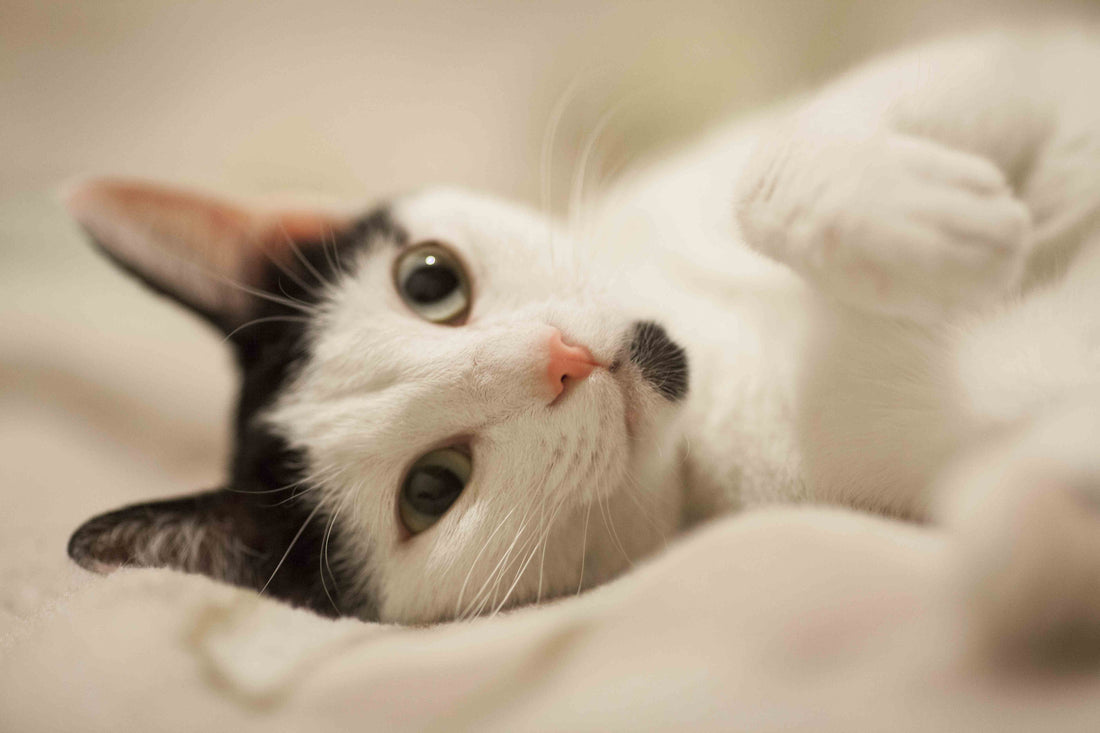Cat Behavior: Why Physical & Mental Health Both Matter for True Feline Well-being

Physical Health + Mental Health = True Health for Cats
Cats are like humans — their mental health is just as important as their physical health. During consultations, veterinary teams often focus on diagnosing and treating illnesses. But if owners aren’t aware of their cat's happiness and environment at home, these topics rarely come up—until a serious problem arises, such as injuries from fights or stress-related lower urinary tract disease.
Are Cats Pets or Playthings?
The earliest recorded history of cat companionship dates back roughly 10,000 years. Archaeologists discovered the skeleton of a kitten buried alongside a human on a Mediterranean island—despite cats not being native there. The find suggests a meaningful bond: the cat likely traveled with its owner and was laid to rest together.
Over the centuries, cat ownership has soared. But despite their popularity, cats have retained their carnivorous instincts, independent nature, and remarkable ability to hide illness. Unlike dogs, cats cannot be trained to submit completely to humans, and they will protect themselves if threatened. Some cats enjoy human interaction—but not all.
Too often, we impose our own human standards of “liking” and “good” onto them, or we raise cats as if they were small dogs. This can cause invisible stress for the cat and frustration for the owner when the cat resists or “misbehaves.”

How to Support a Cat’s True Well-being
Here are five essential ways to meet your cat’s physical and mental needs—plus how Petsgofun products can help.
1. Create a Comfortable Living Environment
Cats are independent and appreciate resting areas that feel safe and secure. Ideal spots are elevated, partially enclosed, and away from heavy foot traffic. This could be as simple as an empty shoe box lid, a covered perch near a window, or a cardboard box with a hole cut in it placed on top of a wardrobe.
Variety is important—provide multiple resting areas around the home. A high perch or cozy box can also double as a scratching post, giving them both comfort and enrichment.
2. Provide Independent Resources
In multi-cat households, each cat should have its own territory and resources—especially if they aren’t tightly bonded (e.g., grooming each other or sleeping together). Provide separate food bowls, water sources, litter boxes, scratching posts, and toys so each cat can choose freely.
While photos of cats eating side-by-side may seem adorable, communal feeding can cause hidden stress for less dominant cats. They may rush through meals or risk bullying. Even if you feed at the same time, set bowls far enough apart for comfort.
Follow the “one litter box per cat, plus one” rule, and place them in different locations to reduce competition. Clean boxes regularly to prevent stress and urinary tract problems.
Petsgofun Tip: Our Automatic Self-Cleaning Litter Box keeps each cat’s bathroom space fresh without extra effort from you—reducing stress and promoting better hygiene in multi-cat households.

3. Encourage Daily Exercise
Kittens are naturally energetic, chasing and pouncing to develop coordination and muscle strength. But as cats mature, their activity level often drops—not because they’re lazy, but because they’ve learned the “game” and see no need to keep chasing a toy they’ve already “caught.”
Without enough activity, adult cats are prone to obesity, which raises the risk of diabetes and urinary blockages. Interactive play sessions, climbing furniture, and food puzzles can keep them moving and mentally engaged.
4. Respect Their Preferred Interaction Style
Cats are not usually fans of long, intense cuddling sessions. Most prefer short, frequent interactions and like to initiate contact on their terms. Many cats will nuzzle, purr, blink slowly, or roll onto their side as signs of affection—but will also walk away when they’ve had enough.
Respecting these boundaries builds trust. Forced handling or prolonged holding can make them anxious and damage your bond. Learn your cat’s personal “safe zones” (head and chin scratches are usually well received, while bellies and paws are often off-limits).
5. Understand the Power of Scent
A cat’s world is shaped by scent. They mark familiar places with pheromones from their face, paws, and tail, which makes them feel secure. That’s why they rub against furniture—or you!
Unfamiliar smells can make them uneasy, so some owners use synthetic pheromone diffusers to help reduce stress. While urine marking may occur in new or stressful environments, inappropriate urination in their usual home is often a sign of medical or behavioral issues and should be checked by a vet.
Final Thoughts
A cat’s beauty and charm can make it easy to fall in love and bring one home on impulse. But truly caring for a cat means more than providing food and medical care—it means creating a safe, stimulating environment that supports both their body and mind.
At Petsgofun, we’re here to help you make that possible—with thoughtfully designed products that improve your cat’s comfort, reduce stress, and make daily care easier for you.
So ask yourself: Is my cat not only healthy, but happy? If the answer is yes, you’re well on your way to giving your feline friend the gift of true health—inside and out.
